The Rhythm of Thought
Art, Literature, and Music after Merleau-Ponty
JESSICA WISKUS
The University of Chicago Press
Chicago and London
Jessica Wiskus is associate professor of musicianship and chair of the Department of Musicianship Studies at Duquesne University.
The University of Chicago Press, Chicago 60637
The University of Chicago Press, Ltd., London
2013 by The University of Chicago
All rights reserved. Published 2013.
Printed in the United States of America
22 21 20 19 18 17 16 15 14 13 1 2 3 4 5
ISBN-13: 978-0-226-03092-0 (cloth)
ISBN-13: 978-0-226-03108-8 (e-book)
Library of Congress Cataloging-in-Publication Data
Wiskus, Jessica, 1976
The rhythm of thought : art, literature, and music after Merleau-Ponty / Jessica Wiskus.
pages : illustrations ; cm
Includes bibliographical references and index.
ISBN 978-0-226-03092-0 (cloth : alkaline paper) ISBN 978-0-226-03108-8 (e-book)
1. Philosophy, French20th century. 2. Art and music. 3. Music and literature. 4. Merleau-Ponty, Maurice, 19081961. 5. Czanne, Paul, 18391906Criticism and interpretation. 6. Debussy, Claude, 18621918Criticism and interpretation. 7. Mallarm, Stphane, 18421898Criticism and interpretation. 8. Proust, Marcel, 18711922Criticism and interpretation. I. Title.
B 2430.M3764W57 2013
194dc23
2012037864
 This paper meets the requirements of ANSI/NISO Z39.48-1992 (Permanence of Paper).
This paper meets the requirements of ANSI/NISO Z39.48-1992 (Permanence of Paper).
Contents
Illustrations
Figures
Musical Examples
Preface
In engaging with the philosophy of Maurice Merleau-Ponty, I take as inspiration the work of Stphane Mallarm, Paul Czanne, Marcel Proust, and Claude Debussy. attends to the notion of transcendence.
The material informing .
Thus, the book has cast itself in a kind of musical form, where the individual chapters proceed not only linearly but through depth.
Acknowledgments
I am grateful to have received a fellowship from the Camargo Foundation in Cassis, France, in support of the early stages of research for this book. In the latter stages of my work, Duquesne University granted a Presidential Scholarship Award to help bring the project to completion. I especially wish to thank Dean Edward Kocher and Dean Jim Swindal at Duquesne University for their sustained and sustaining enthusiasm for interdisciplinary endeavors in music and philosophy.
I wish to acknowledge the kind permission of Ullrich Haase, editor of the Journal of the British Society for Phenomenology, to revise and reconfigure some material for that originally appeared in JBSP 43, no. 3 (2012) under the title Merleau-Ponty through Mallarm and Debussy: On Silence, Rhythm, and Expression.
This book could not have been written without the inspiration and encouragement that so many colleagues have shared with me over the years. I am particularly indebted to Leonard Lawlor and Galen Johnson, who graciously commented on an early manuscript version of the book, as well as Mauro Carbone, William Hamrick, Richard Kearney, Dennis Schmidt, Steve Watson, Jason Wirth, David Wood, and the wonderful members of the Merleau-Ponty Circle. I savor their conversations and treasure their work.
I wish also to thank Elizabeth Branch Dyson and her colleagues at the University of Chicago Press, and I am grateful for their commitment to music in its interdisciplinary possibility.
Finally, for the years of love, laughter and discovery that nourished me while writing this book, my heart is thankful to Larry Collins.
Mallarm and a Proffer of Silence
The definition of philosophy would involve an elucidation of philosophical expression itself (therefore a becoming conscious of the procedure used in what precedes navely, as though philosophy confined itself to reflecting what is) as the science of pre-science, as the expression of what is before expression and sustains it from behind.
MAURICE MERLEAU-PONTY, The Visible and the Invisible
In reading the philosophy of Maurice Merleau-Ponty, one must navigate both the opacity of his language and the incompleteness of his work. His penchant for holding in tension the relationship between oppositional pairsvisible and invisible, activity and passivity, sensible and idealas well as his development of a unique vocabulary nevertheless replete with traditional Christian termschiasm, advent, flesh, Wordhas led to more than one characterization of his work as something close to that of the mystics vision.
Yet it is perhaps appropriate that much of Merleau-Pontys late work comes down to us not in the form of narrative, but in rough outline. For instead of offering us the sedimentation of a philosophy spoken from the end of thinking, his work promises an openingan initiation to a philosophical discourse that by its very nature could be nothing other than ongoing and incomplete. In this sense, the course notes and working notes contribute to our understanding of his philosophy precisely in the degree to which they illustrate that philosophy in practice. When we read the notes, we participate in a movement of thought.
And so the difficulties that one encounters when engaging with these notes invite us to develop a sensitivity to his writing that would take into account not only the fixed meaning of each word or phrase, but also the process through which the word or phrase arrives at an original sense. We must turn to the viscous link that binds the words into meaning, for beneath the conceptual content of each wordbeyond our everyday employment of language as representationlies a dynamic and creative realm of expression. Thus Merleau-Ponty can write, The words most charged with philosophy are not necessarily those that contain what they say, but rather those that most energetically open upon Being, because they more closely convey the life of the whole and make our habitual evidences vibrate until they disjoin.
It is in this sense that Merleau-Pontys writing is poeticpoetic in the etymological sensefor it consistently works to disclose the creative generation of philosophical thinking as emerging from the depth between (or beneath, behind, or before) articulated words. In this way, it might seem that the thinking that remains for us, through Merleau-Pontys late sketches of notes, stands close to the tradition of poetry. Indeed, the notes are significant not only with respect to their content but also in the way that they expose lacunae upon the printed page. It is as if the later Merleau-Ponty deliberately employs words in such a way that they work not so much to convey an explicit meaning as to articulate the empty space upon the page: as spaceas an openingfor a continuous reinitiation to philosophical thought.
Thus the status of his written work as unfinished is in harmony with the nature of the work itself. Though we feel his death to be the tragic cause of its incompleteness, how, even if he had lived for many more decades, could we ever have called his work complete? Would not that work, from a Merleau-Ponty of 1971 or 1981, also have left us with more questions, more openings, if it were truly philosophical work? Philosophy lives precisely through its incompleteness, offering its richness according to the demand that it be taken up again.
As we grapple with the distinct difficulties (and, it should be noted, pleasures) of engaging with a dynamic work of this sort, it is not altogether unexpected that we should find ourselves in good company. Many of the challenges that confront us in taking up the incomplete work of Merleau-Ponty are similar to those that he himself encountered in his engagement with the writings of Edmund Husserl. Indeed, what better guide could we find, in facing these challenges, than Merleau-Ponty? With respect to Husserls philosophy, Merleau-Ponty asks: What if its conclusions are merely the results of a progression which was transformed into a work by the interruptionan interruption which is always prematureof a lifes work? Then we could not define a philosophers thought solely in terms of what he had achieved; we would have to take account of what until the very end his thought was trying to think.
Next page
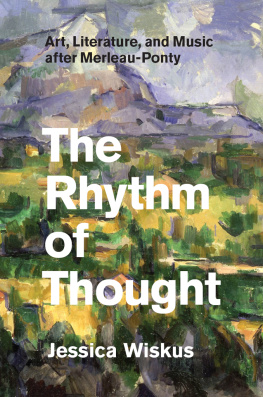
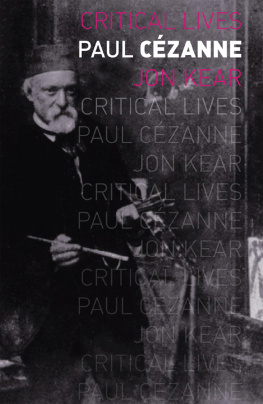
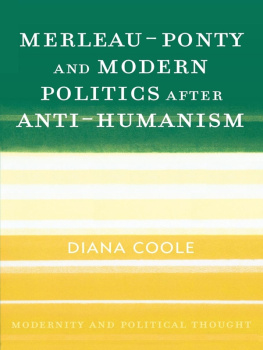
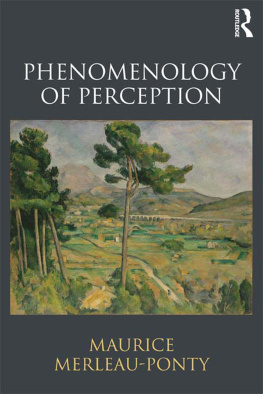
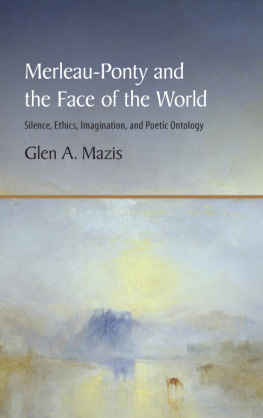

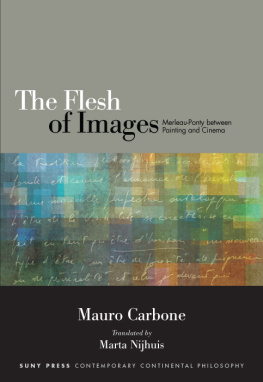
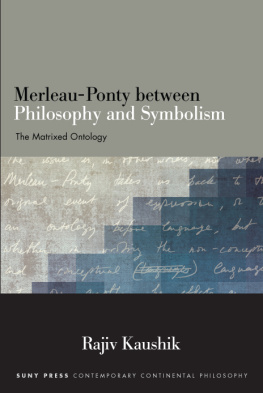

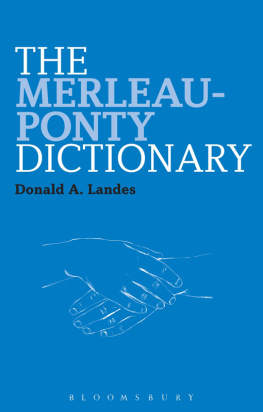
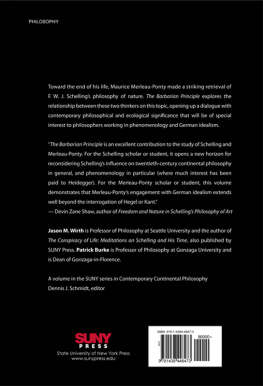
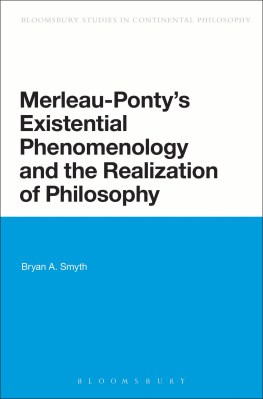
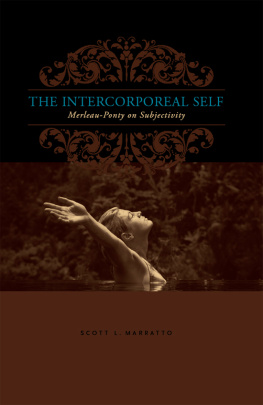
 This paper meets the requirements of ANSI/NISO Z39.48-1992 (Permanence of Paper).
This paper meets the requirements of ANSI/NISO Z39.48-1992 (Permanence of Paper).